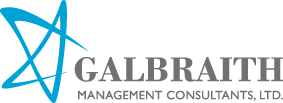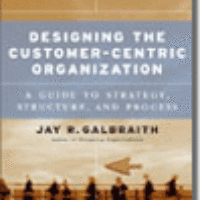Designing the Customer-Centric Organization
Designing the Customer-Centric Organization offers today’s business leaders a comprehensive customer-centric organizational model that clearly shows how to put in place an infrastructure that is organized around the demands of the customer.
Many companies today are facing demands from customers to offer more than just a stand-alone product. Customers want bundles of products, often with a software component, that provide “solutions.” These can include packaged modules such as a foreign exchange trading floor, an entire automobile interior, or a home entertainment center. But such demands can tax even the most agile of companies to pull together the component parts — many of which the company doesn’t even make. Jay’s new book describes how to organize to deliver these kinds of solutions.
Galbraith argues that building the customer-centric organization is more than just installing a CRM system or changing the brand management. He shows how structure must be changed, but more importantly, how management and business processes must be adapted and aligned with the strategy to facilitate customer-oriented work processes.
This important book includes The Strategy Locator, a tool that will help determine how customer-centric an organization is: light-level, medium-level, complete-level, or high-level. The book also shows how to ascertain the appropriate level for a particular institution. Once the groundwork has been established, the author offers guidance for the process of implementing a customer-centric system throughout an organization. The last chapter traces the progress of a semiconductor company in its quest to develop a customer-centric organization.
“Jay Galbraith has once again tackled a fraught and complex subject and made it not only clear, but deeply engaging, for his readers. The result is an excellent practical roadmap for organizations trying to develop customer-centric solutions. “
— Israel Makov, President and CEO, Teva Pharmaceutical Industries, Ltd.
“Jay Galbraith is one of the world’s premier experts in organization design, having vast knowledge of both the theory and practice of creating sustainable competitive advantage. P&G’s new organization structure is producing significant competitive advantage, and uses many of the concepts of customer-centricity detailed by Jay.”
— Keith Lawrence, Director Human Resources, Global Beauty, Procter & Gamble
“In a world where business success or failure is increasingly dependent on a companies ability to align its resources around the customer, this book is a must read that describes in very practical terms how large organizations can cope with this added dimension.”
— Gerard J. Kleisterlee, President and CEO, Royal Philips Electronics
“Galbraith provides an excellent framework for navigating through the complex organizational decisions and processes required to successfully lead an enterprise from product- to customer-centricity.”
— Vincent Roche, PVice President, Global Sales, Analog Devices, Inc.
“Jay Galbraith has once again written a pathbreaking book on organizational design. He has put the customer squarely in focus, and developed a new paradigm for the design of effective organizations based on this. Thus, a strong sense of relevant organizational purpose is achieved, based on creating value vis-a-vis the customer. A landmark book.”
— Peter Lorange, President, International Institute for Management Development, Lausanne, Switzerland
| Introduction | |
| The customer owns you | |
| Keep it simple for the customer | |
| Most companies THINK they are customer-centric (but most are not) | |
| Chapter One | Surviving the Customer Revolution |
| The status quo has to go | |
| The customer-centric imperative | |
| The rise of the customer dimension | |
| Strategy and organization model | |
| How customer-centric are you really? | |
| Chapter Two | Customer-Centricity: How Much is Enough? |
| Customer relationship strategies | |
| The strategy locator tool | |
| Creating a lateral networking capability | |
| Chapter Three | Light Level Application |
| Using customer teams as the structural form | |
| Degussa Automotive Catalysts division | |
| Implementing total organization design using management processes, measures, rewards and people practices | |
| Leadership is the key | |
| Chapter Four | Medium-Level Application |
| More complex strategies require more complex organizations | |
| The global investment bank case (IBank) | |
| Customer account units | |
| Customer relationship management systems | |
| Chapter Five | Complete-Level Application |
| Complex solutions and customer-centric organizations | |
| IBM as “One Company” | |
| The Front-Back organization model | |
| Horizontal, generic solutions versus vertical, industry-specific solutions | |
| Using CRM to manage complex interfaces | |
| Solutions P+L Units | |
| Human resources practices in a customer-centric organization | |
| Chapter Six | Alternate High-Level Solutions Companies |
| Variations in the Front-Back organization model | |
| Nokia Networks | |
| Procter & Gamble | |
| The capability that Citibank built | |
| How to manage the change process | |
| Chapter Seven | Designing a Customer-Centric Organization |
| The evolution of a semiconductor company from product-centric to customer-centric | |
| Strategies: competitive advantage versus comparative advantage | |
| The importance of getting the management and business processes right | |
| Management and decision avoidance | |
| The importance of top-down management support | |
| Chapter Eight | Leading Through Management Processes |
| Leading strategic change | |
| Linking processes | |
| Reconciling strategies | |
| Portfolio planning and solutions development | |
| Opportunity management processes |

